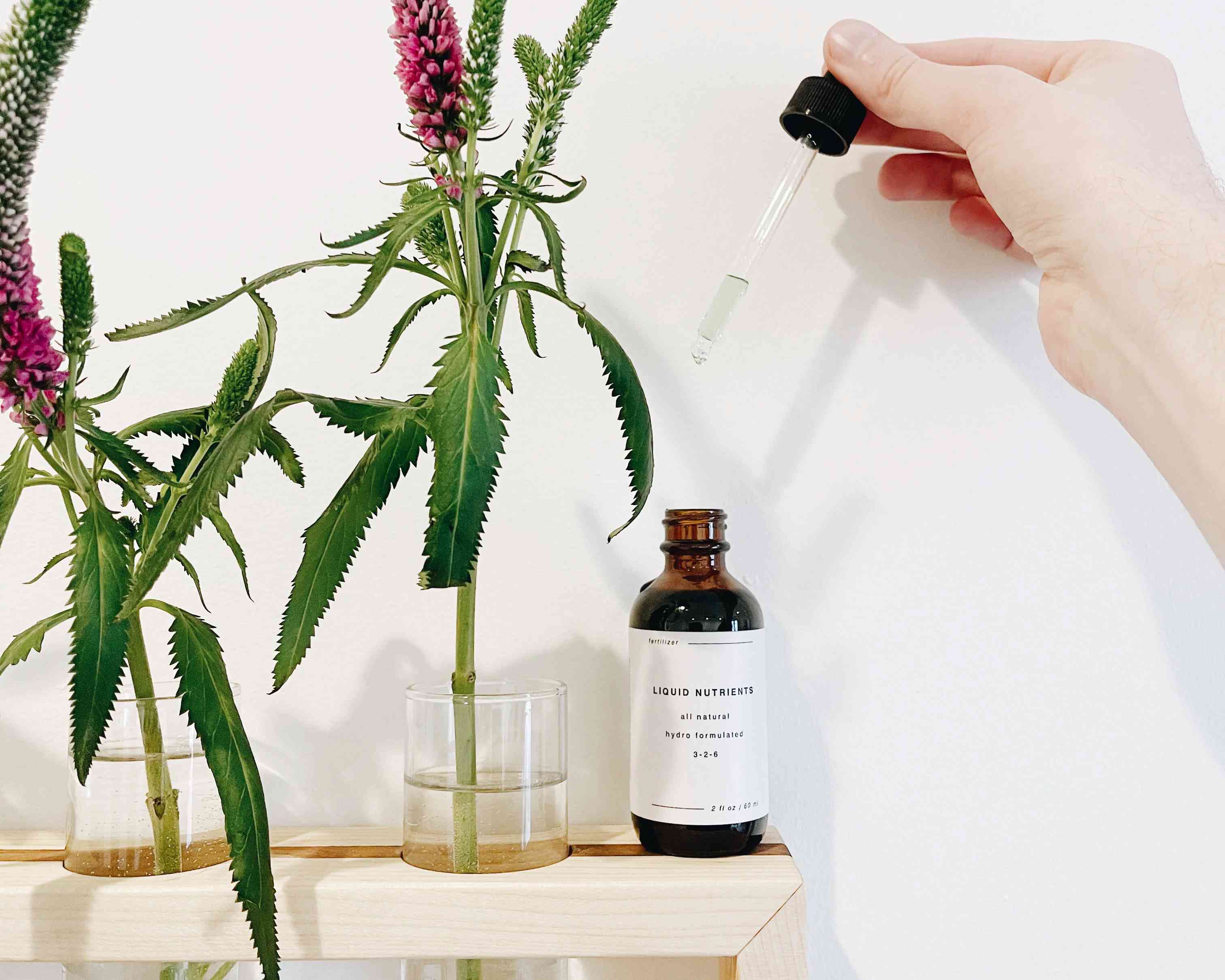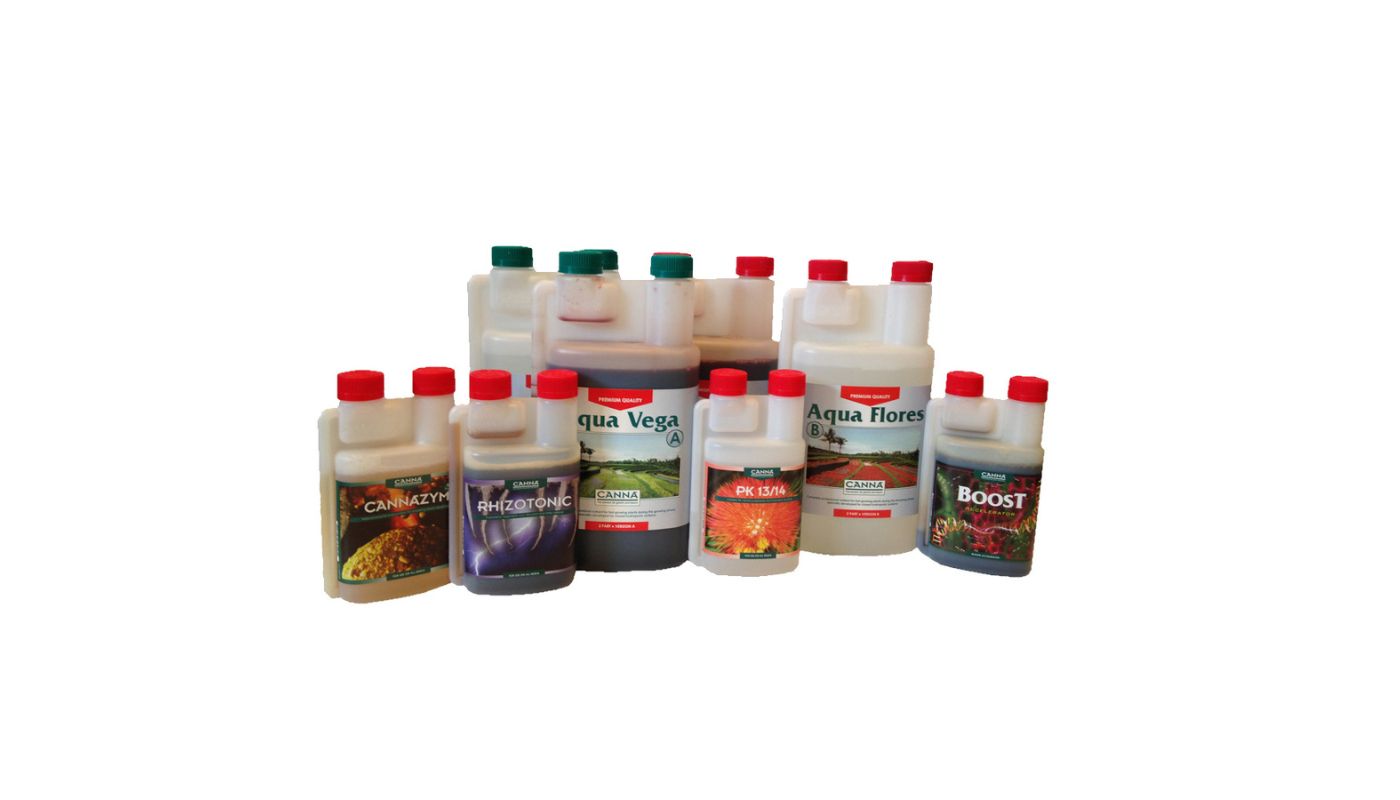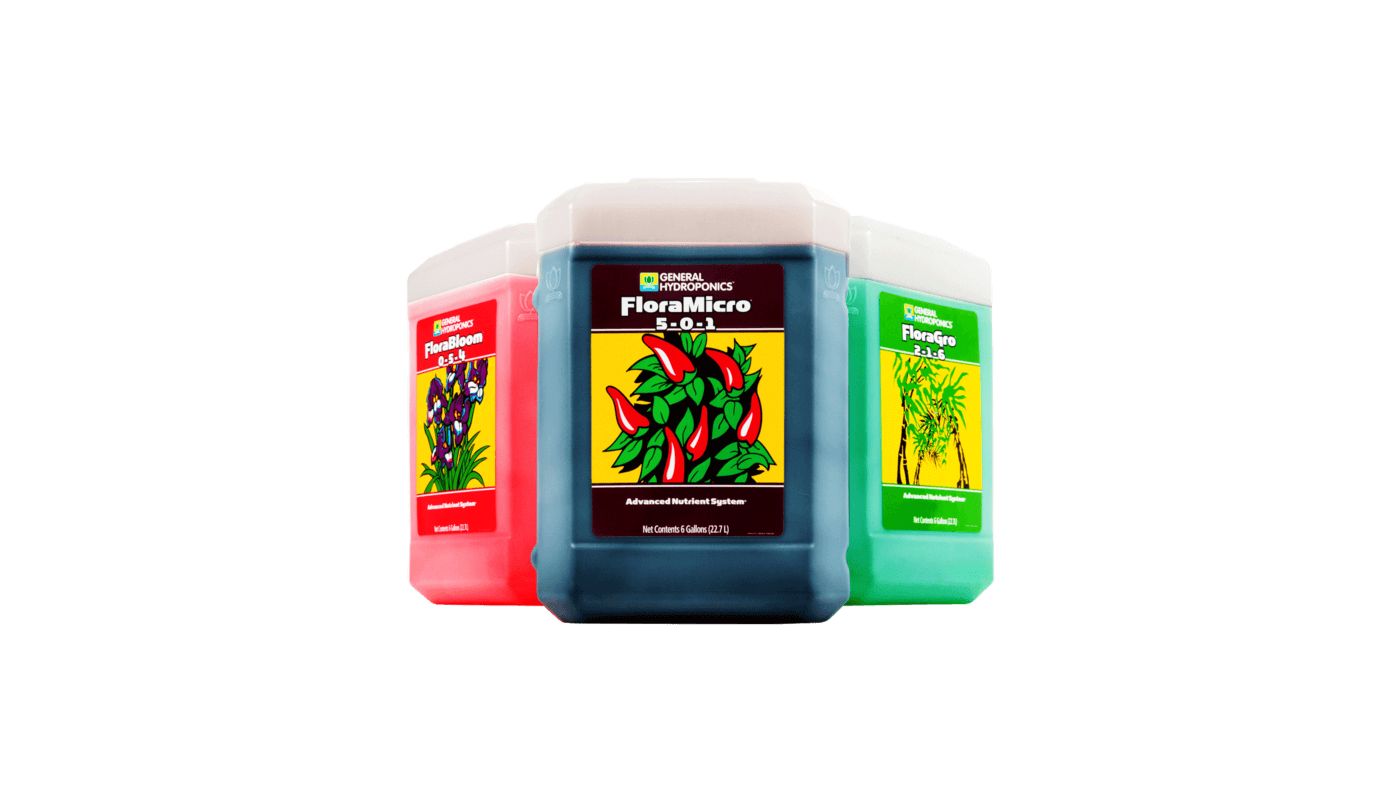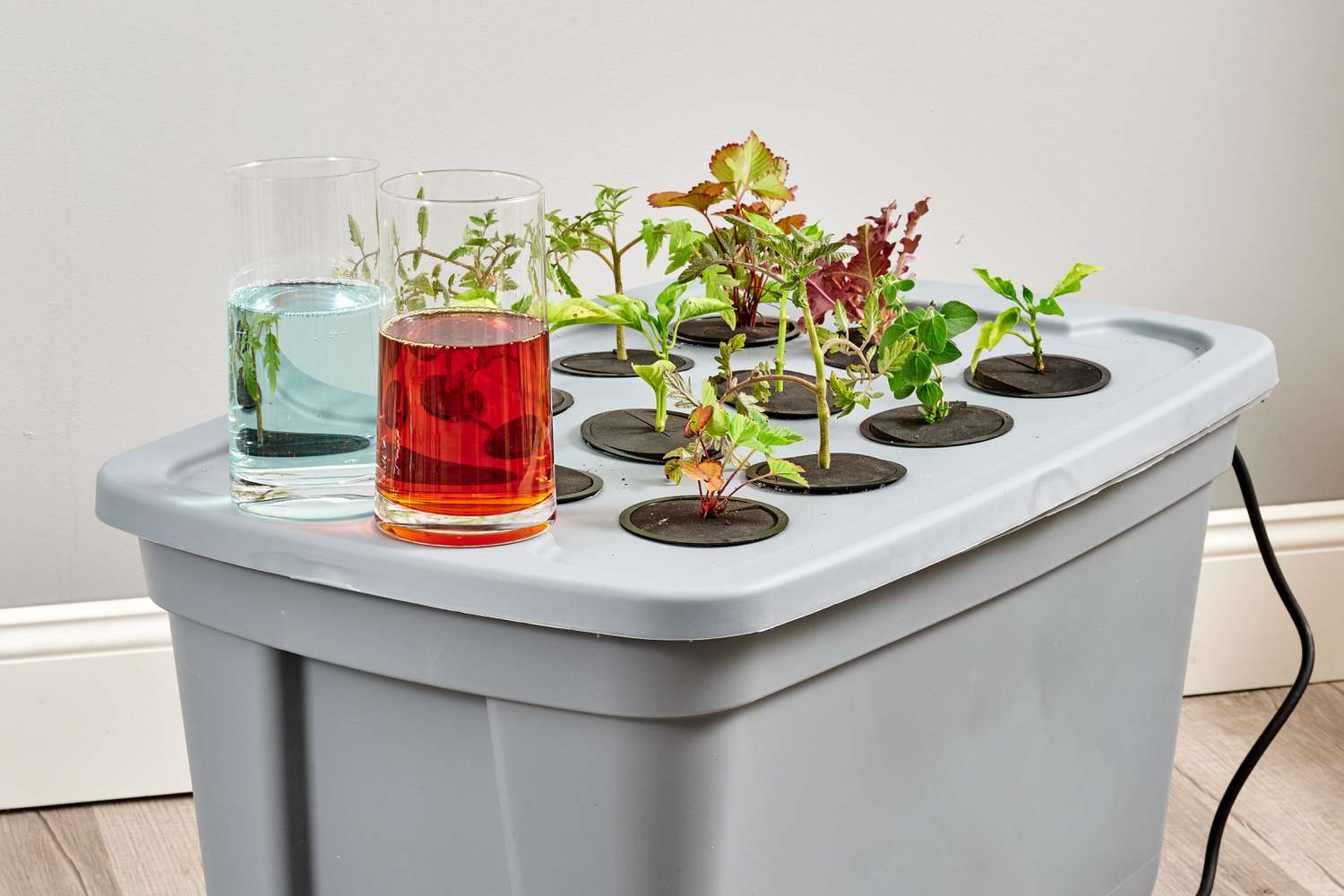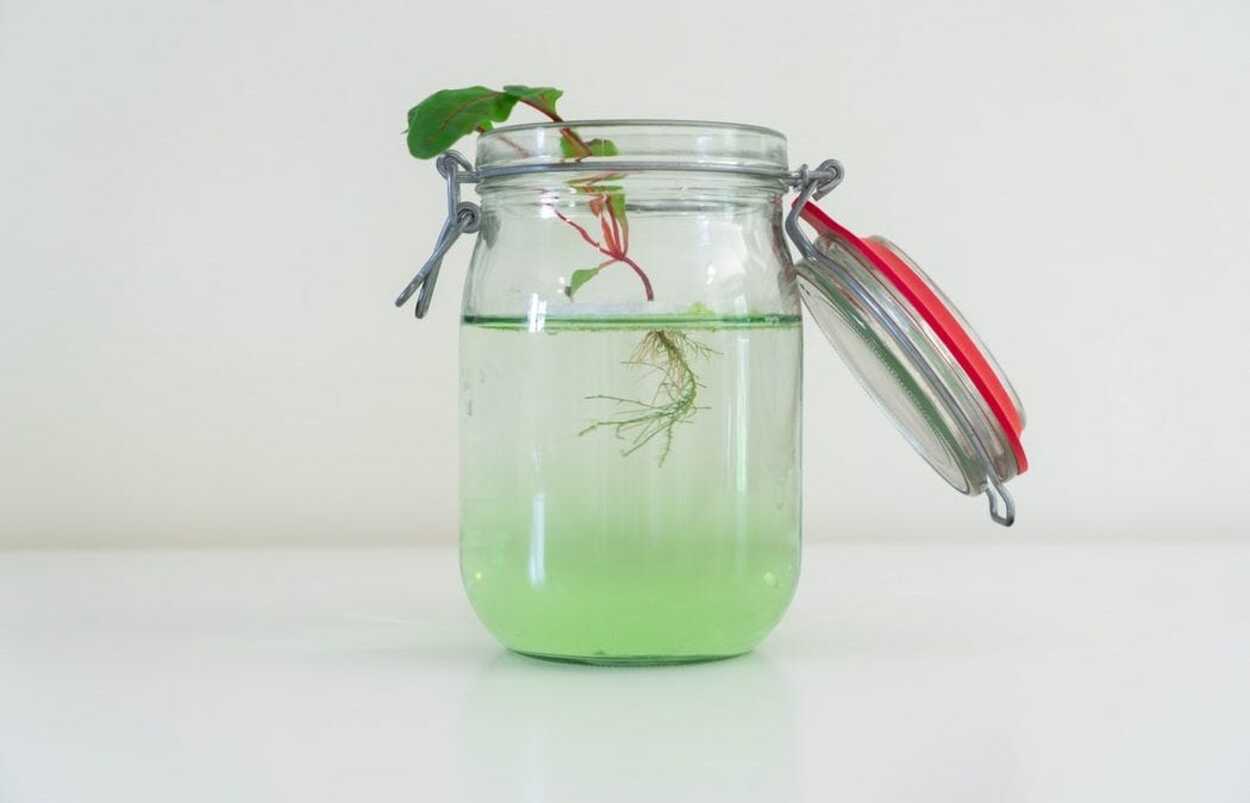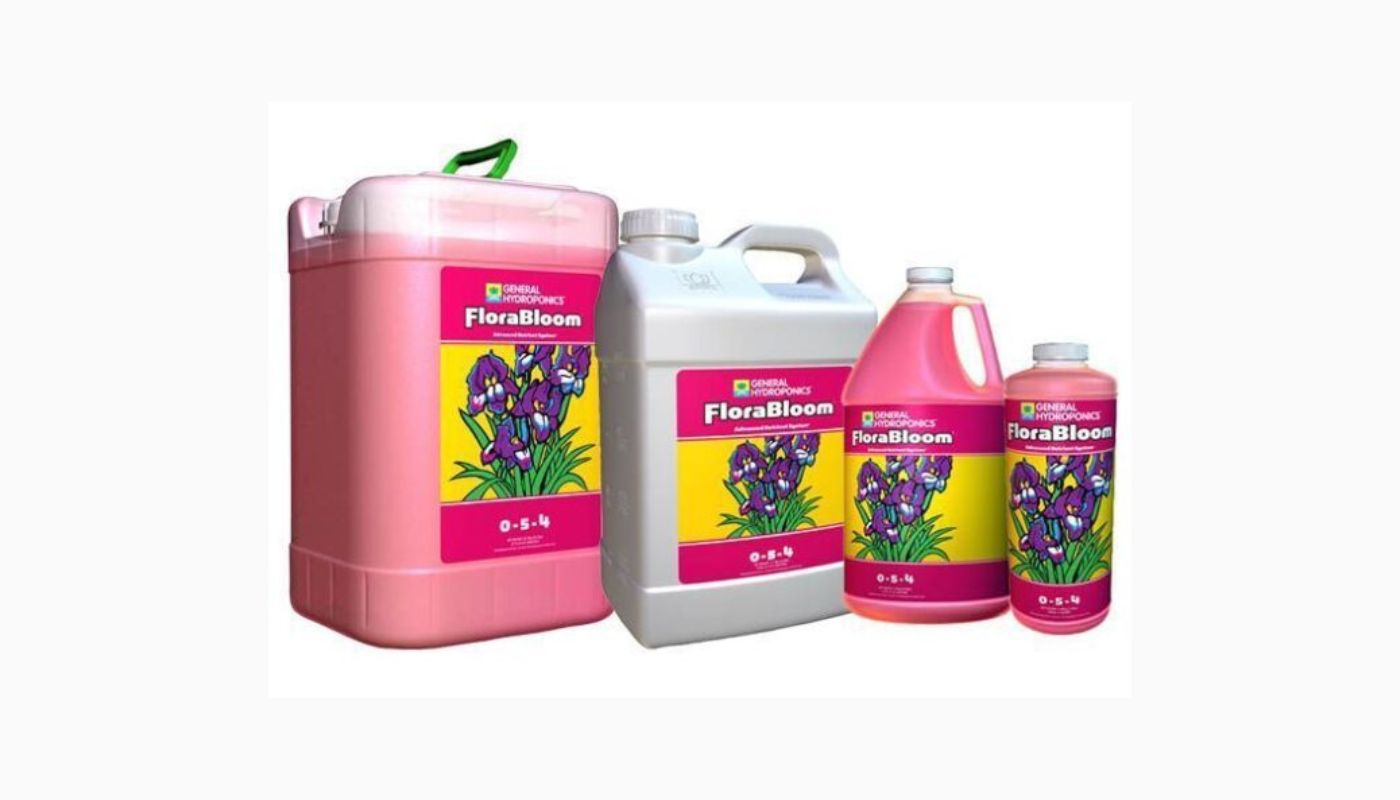Home>Gardening Tips and Tricks>Eco-Friendly Gardening>What Nutrients Are Required For Hydroponics
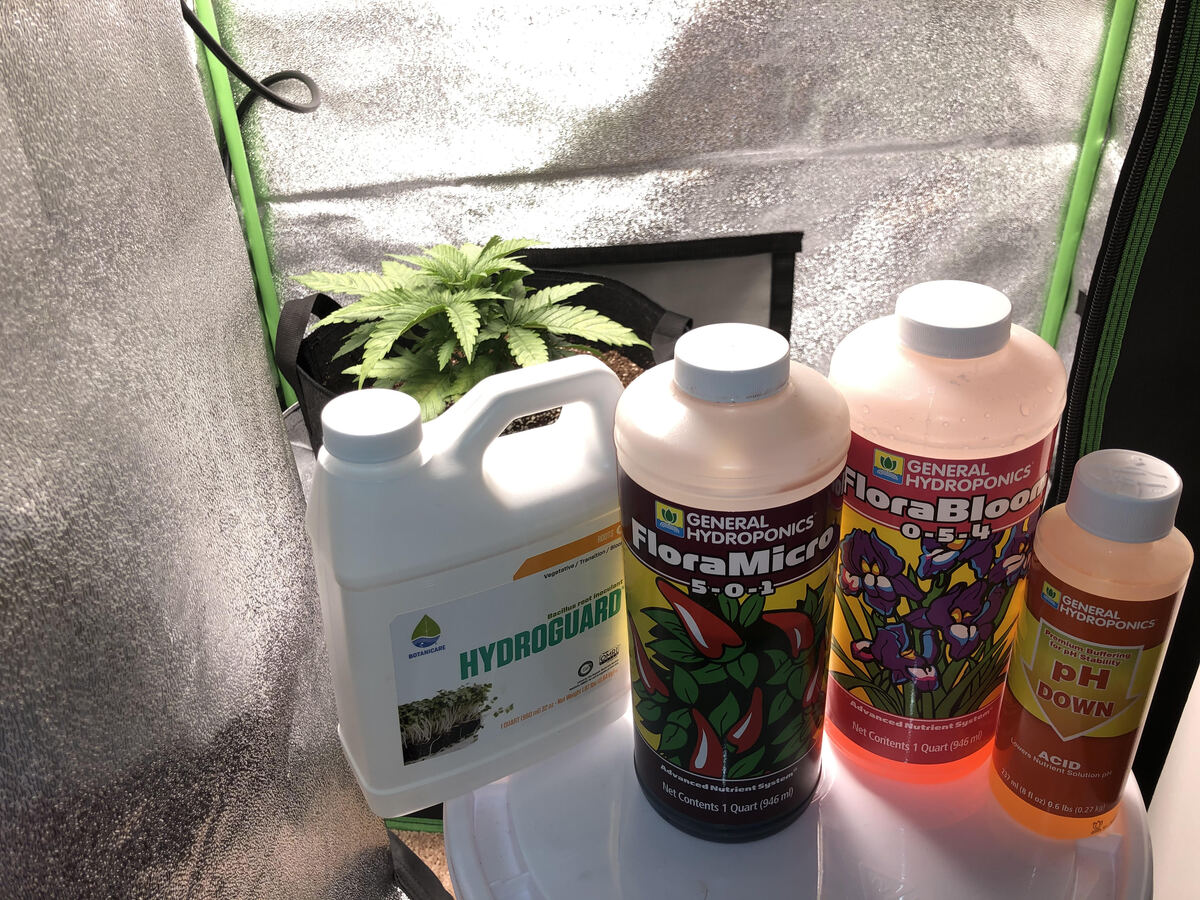

Eco-Friendly Gardening
What Nutrients Are Required For Hydroponics
Modified: January 22, 2024
Discover the essential nutrients needed for eco-friendly gardening in hydroponics. Learn how to optimize plant growth and reduce environmental impact with our guide on hydroponic nutrient requirements.
(Many of the links in this article redirect to a specific reviewed product. Your purchase of these products through affiliate links helps to generate commission for Chicagolandgardening.com, at no extra cost. Learn more)
Table of Contents
Introduction
Eco-friendly gardening has gained significant popularity in recent years as people become more conscious of the impact their actions have on the environment. One of the key aspects of eco-friendly gardening is the use of sustainable and environmentally friendly practices. An increasingly popular method that aligns with this approach is hydroponic gardening.
Hydroponics is a method of growing plants without soil, using nutrient-rich water solutions instead. As soil is not required, hydroponic gardening eliminates many of the common challenges associated with traditional gardening methods, such as soil-borne diseases and limited space. However, to ensure successful growth and abundant harvests, it is essential to provide the plants with all the necessary nutrients they need to thrive.
Hydroponic plants require a precise balance of macro and micronutrients to support their growth and development. Macronutrients are the primary nutrients that plants require in larger quantities, while micronutrients are needed in smaller quantities but are equally vital for overall plant health.
In this article, we will explore the essential nutrients required for hydroponics, including both macronutrients and micronutrients. Understanding the role of these nutrients and how to provide them to your hydroponic plants will help you create a thriving and eco-friendly garden.
Macronutrients
Macronutrients are the primary nutrients that plants require in larger quantities to support their growth and development. These nutrients play a vital role in various plant functions, including photosynthesis, energy production, and structural development. The three main macronutrients essential for hydroponic gardening are nitrogen, phosphorus, and potassium.
Nitrogen: Nitrogen is responsible for promoting leaf and stem growth in plants. It is a crucial component of chlorophyll, the pigment that allows plants to convert sunlight into energy through photosynthesis. Lack of nitrogen can result in stunted growth and yellowing of leaves. Conversely, too much nitrogen can lead to excessive foliage growth, reducing fruit and flower production. Common nitrogen sources in hydroponic systems include calcium nitrate and potassium nitrate.
Phosphorus: Phosphorus is essential for the development of healthy roots, flowers, and fruits in plants. It plays a crucial role in energy transfer and DNA synthesis. Phosphorus deficiency can lead to poor root development and reduced flowering and fruiting. To supplement phosphorus in hydroponic systems, phosphoric acid or monopotassium phosphate can be used as nutrient sources.
Potassium: Potassium is involved in many plant functions, including water regulation, protein synthesis, and enzyme activation. It helps plants withstand stress, resist diseases, and improve overall plant health. Potassium deficiency can result in weak stems, poor fruit development, and increased susceptibility to pests and diseases. Common potassium sources in hydroponics include potassium sulfate and potassium nitrate.
In addition to the primary macronutrients mentioned above, there are also secondary macronutrients that hydroponic plants require in smaller quantities. These include calcium, magnesium, and sulfur. Calcium aids in cell wall development and helps prevent diseases such as blossom end rot. Magnesium is necessary for chlorophyll production, while sulfur contributes to protein synthesis and overall plant health.
It is crucial to maintain a proper balance of macronutrients in hydroponic systems to ensure optimal plant growth and productivity. Monitoring nutrient levels and adjusting the nutrient solution accordingly is essential to avoid deficiencies or toxicities. By providing the right macronutrients in the right amounts, you can create a healthy and thriving hydroponic garden.
Nitrogen
Nitrogen is one of the essential macronutrients for hydroponic plants. It plays a crucial role in promoting leaf and stem growth, making it an essential nutrient for plant development. Nitrogen is a fundamental component of chlorophyll, the pigment responsible for capturing sunlight and converting it into energy through the process of photosynthesis.
In a hydroponic system, providing the right amount of nitrogen is crucial for maintaining healthy and vigorous plant growth. Nitrogen deficiency can significantly impact plant health, resulting in stunted growth, pale or yellowing leaves, and decreased overall productivity. Lack of nitrogen can also lead to reduced photosynthesis, as chlorophyll production is compromised. It is important to monitor nitrogen levels and ensure plants receive an adequate supply to prevent these negative effects.
On the other hand, excessive nitrogen can also be problematic. When plants receive an abundance of nitrogen, they tend to allocate more energy towards foliage growth rather than fruit or flower production. This can result in plants that are excessively bushy but produce fewer fruits or flowers. It is crucial to find a balance in nitrogen levels to promote both vegetative growth and reproductive development.
There are various sources of nitrogen that can be used in hydroponic systems. One common option is calcium nitrate, a highly soluble fertilizer that provides both nitrogen and calcium. Another commonly used nitrogen source is potassium nitrate, which not only supplies nitrogen but also potassium, another essential macronutrient. These nutrient sources can be added to the hydroponic nutrient solution in the appropriate concentrations to ensure plants receive a consistent and balanced supply of nitrogen.
It is important to note that nitrogen levels may need to be adjusted at different stages of plant growth. During the vegetative stage, when plants are focused on developing leaves and stems, a higher nitrogen concentration may be beneficial. However, as plants transition to the flowering or fruiting stage, a reduction in nitrogen levels can encourage reproductive development.
Regular monitoring of nutrient levels and observing plant growth can help you determine whether adjustments to nitrogen levels are necessary. By providing an optimal amount of nitrogen, you can support healthy growth, robust foliage, and ultimately, a productive hydroponic garden.
Phosphorus
Phosphorus is an essential macronutrient for hydroponic plants, playing a crucial role in various aspects of plant growth and development. It is particularly important for the development of healthy roots, flowers, and fruits. Phosphorus is involved in energy transfer within plants and is a vital component of DNA, RNA, and ATP, which are essential for cell division and growth.
Ensuring an adequate supply of phosphorus is crucial for optimal plant growth and productivity in a hydroponic system. Phosphorus deficiency can have significant negative effects on plants, such as poor root development, reduced flowering, and fruiting, and overall stunted growth. When plants lack sufficient phosphorus, they may exhibit symptoms such as purplish or reddish leaf discoloration and decreased vigor.
To supplement phosphorus in a hydroponic system, various nutrient sources can be used. One commonly used source is phosphoric acid, which can be added to the nutrient solution in the appropriate concentration. Another popular option is monopotassium phosphate, which not only supplies phosphorus but also potassium, another essential macronutrient for plants.
When adding phosphorus to the hydroponic nutrient solution, it is crucial to consider the specific needs of the plants in your system. Different plants may have varying requirements for phosphorus at different stages of growth. For example, during the early stages of plant development, a higher phosphorus concentration may be beneficial to support strong root development. As plants transition to the flowering or fruiting stage, adjusting phosphorus levels to promote reproductive growth can be advantageous.
It is important to note that phosphorus availability can be influenced by pH levels. In hydroponic systems, maintaining a slightly acidic pH level (around 5.5 to 6.5) can help ensure optimal phosphorus uptake. If the pH becomes too alkaline, the availability of phosphorus to plants may decrease. Regular monitoring of pH levels and making necessary adjustments can help maintain an optimal phosphorus supply.
Overall, providing an adequate supply of phosphorus in a hydroponic system is essential for healthy root development, robust flowering, and fruitful harvests. By understanding the importance of phosphorus and utilizing appropriate nutrient sources, you can support the growth and development of your hydroponic plants effectively.
Potassium
Potassium is a vital macronutrient required by hydroponic plants for various important functions in their growth and development. It plays a significant role in regulating water movement within plants, activating enzymes, and facilitating protein synthesis. Potassium is also known to enhance plant resilience to stress, improve disease resistance, and promote overall plant health.
Providing an adequate supply of potassium is crucial for ensuring optimal growth and productivity in a hydroponic system. Potassium deficiency can have detrimental effects on plants, including weakened stems, reduced flowering and fruiting, and increased susceptibility to pest and disease attacks. Plants lacking potassium may also exhibit symptoms such as yellowing of leaf margins or browning of leaf edges.
In a hydroponic system, there are various sources of potassium that can be used to supplement plants’ nutrient needs. One common option is potassium sulfate, a water-soluble potassium fertilizer. Another commonly used potassium source is potassium nitrate, which not only provides potassium but also nitrogen, another essential macronutrient.
The concentration of potassium in the hydroponic nutrient solution may need to be adjusted based on the specific requirements of the plants being grown. During the vegetative stage, when plants are focused on developing stems and leaves, a higher concentration of potassium may be suitable. However, as plants transition to the flowering or fruiting stage, adjusting potassium levels can help encourage reproductive growth.
It is important to note that potassium availability can be influenced by pH levels. In a hydroponic system, maintaining an optimal pH range (usually between 5.5 and 6.5) is crucial for facilitating potassium uptake by plants. If the pH becomes too acidic or alkaline, it can affect the availability of potassium, leading to deficiency symptoms. Regular pH monitoring and adjustment as needed can help ensure plants receive an optimal supply of potassium.
Overall, potassium plays a vital role in supporting healthy growth, disease resistance, and robust flowering and fruiting in hydroponic plants. By providing an appropriate supply of potassium through suitable nutrient sources and maintaining optimal pH levels, you can promote the overall health and productivity of your hydroponic garden.
Calcium
Calcium is an essential macronutrient for hydroponic plants, playing a critical role in various aspects of plant growth and development. It is an essential component for the development and strength of cell walls, promoting structural integrity and overall plant health. Calcium is also involved in several enzymatic reactions, cell division, and the transport of other nutrients within the plant.
Ensuring an adequate supply of calcium is crucial in a hydroponic system to prevent common plant disorders such as blossom end rot, which affects fruits and vegetables. Calcium deficiency can lead to weak cell walls, resulting in reduced strength and increased susceptibility to pathogens and environmental stresses. Symptoms of calcium deficiency may include tip burn on leaves and distorted growth.
There are several sources of calcium that can be used in hydroponic systems to supplement plant nutrition. One commonly used source is calcium nitrate, which provides both calcium and nitrogen, another essential macronutrient. Another option is calcium chloride, a highly water-soluble calcium fertilizer.
It is important to note that calcium availability can be affected by pH levels and other nutrients in the hydroponic system. Maintaining a slightly acidic pH level (around 5.5 to 6.5) can help facilitate calcium uptake by plants. Additionally, balancing the levels of other nutrients, particularly magnesium and potassium, can also influence calcium uptake and utilization.
Calcium requirements may vary at different stages of plant growth. During the early stages, higher calcium concentrations may be beneficial for promoting robust root development and establishing strong cell structures. As plants transition to the flowering and fruiting stages, maintaining adequate calcium levels can help prevent disorders and ensure healthy fruit and seed development.
Regular monitoring of nutrient levels, pH, and plant health is crucial to ensure plants receive an optimal supply of calcium. Adjustments to the nutrient solution may be necessary to maintain the desired calcium concentration, especially when growing plants with specific calcium requirements.
By providing plants with a sufficient supply of calcium, you can help promote strong cell structures, disease resistance, and overall plant health in your hydroponic garden.
Magnesium
Magnesium is an essential macronutrient for hydroponic plants, playing a crucial role in various physiological processes. It is a vital component of chlorophyll, the pigment responsible for capturing sunlight and facilitating photosynthesis. Magnesium is also involved in enzyme activation, DNA synthesis, and the transport and metabolism of other nutrients within plants.
Ensuring an adequate supply of magnesium is crucial in a hydroponic system to support healthy plant growth and development. Magnesium deficiency can have significant negative effects on plants, including chlorosis (yellowing) of leaves, poor growth, and decreased photosynthetic activity. Symptoms of magnesium deficiency often appear first in older leaves, with the leaf margins turning yellow and progressing towards the center of the leaf.
In hydroponic systems, magnesium can be supplemented using various nutrient sources. One commonly used source is magnesium sulfate (Epsom salt), which is highly soluble in water and easily absorbed by plants. It is important to note that magnesium sulfate also provides sulfur, another essential macronutrient for plant growth.
Maintaining appropriate pH levels is crucial for promoting magnesium availability to plants. In general, magnesium is most readily available to plants in a slightly acidic to neutral pH range of around 5.5 to 6.5. Monitoring and adjusting the pH of the nutrient solution to this optimal range can help ensure sufficient magnesium uptake by plants.
Magnesium requirements may vary at different stages of plant growth. During the vegetative stage, when plants are focused on developing leaves and stems, a higher concentration of magnesium may be beneficial. As plants transition to the flowering or fruiting stage, adjusting magnesium levels to meet the specific needs of the plants can be advantageous.
Regular monitoring of nutrient levels, pH, and plant health is important to ensure plants receive an optimal supply of magnesium. Adjustments to the nutrient solution may be necessary to maintain the desired magnesium concentration, especially when growing plants with specific magnesium requirements.
By providing plants with a sufficient supply of magnesium, you can support healthy chlorophyll production, robust photosynthesis, and overall plant vigor in your hydroponic garden.
Sulfur
Sulfur is a vital macronutrient required by hydroponic plants for various essential functions in their growth and development. It plays a crucial role in protein synthesis, enzyme activation, and the formation of amino acids. Sulfur is also involved in the process of chlorophyll production, contributing to healthy leaf development and photosynthetic activity.
Ensuring an adequate supply of sulfur is important in a hydroponic system to support optimal plant growth and productivity. Sulfur deficiency can have detrimental effects on plants, including reduced growth, yellowing of leaves (similar to nitrogen deficiency), and decreased overall vigor. Symptoms of sulfur deficiency usually appear in new leaves, which exhibit light green or yellow coloring.
In hydroponic systems, sulfur can be supplemented through various nutrient sources. One commonly used source of sulfur is magnesium sulfate (Epsom salt). Magnesium sulfate provides both magnesium and sulfur, making it an effective supplement for addressing deficiencies of both nutrients. Other sources of sulfur, such as calcium sulfate or potassium sulfate, can also be used to supplement sulfur levels in the nutrient solution.
Maintaining an appropriate pH level is crucial for promoting sulfur availability to plants. Sulfur is most readily available to plants in slightly acidic to neutral pH conditions, typically ranging from 5.5 to 6.5. Monitoring and adjusting the pH of the nutrient solution can help optimize sulfur uptake by plants.
Sulfur requirements may vary depending on the specific plant species and their growth stage. During the vegetative stage, when plants are focused on leaf and stem development, a higher concentration of sulfur may be necessary. As plants transition to the flowering or fruiting stage, adjustments to sulfur levels can help meet the specific needs of the plants.
Regular monitoring of nutrient levels, pH, and plant health is important to ensure plants receive an appropriate supply of sulfur. Adjustments to the nutrient solution may be necessary to maintain the desired sulfur concentration, especially when growing plants with specific sulfur requirements.
By providing plants with a sufficient supply of sulfur, you can support healthy protein synthesis, chlorophyll production, and overall plant growth in your hydroponic garden.
Micronutrients
While macronutrients are essential for hydroponic plant growth, micronutrients are equally important, even though they are needed in smaller quantities. Micronutrients are vital for various physiological processes in plants, including enzyme activity, hormone production, and overall plant health. Although micronutrients may be required in lower amounts, their deficiency can have significant negative impacts on plant growth and productivity.
There are several important micronutrients that hydroponic plants require. Some of the key micronutrients include iron, manganese, zinc, copper, boron, molybdenum, and chlorine. Let’s explore each of these micronutrients in more detail:
- Iron: Iron is crucial for chlorophyll production, which enables plants to carry out photosynthesis. Iron deficiency often presents as yellowing of new leaves, while sporadic iron supply can result in interveinal chlorosis.
- Manganese: Manganese is involved in various enzymatic reactions and plays a role in photosynthesis, root growth, and nutrient metabolism. Manganese deficiency can lead to yellowing between veins and stunted plant growth.
- Zinc: Zinc is necessary for many aspects of plant metabolism, enzyme activation, and hormone regulation. Zinc deficiency can cause stunted growth, reduced leaf size, and distorted leaves.
- Copper: Copper plays a vital role in enzyme function and acts as a catalyst for several plant processes. Copper deficiency can result in wilting, pale leaves, and inhibited root growth.
- Boron: Boron is essential for cell division, pollen development, and the movement of sugars within plants. Boron deficiency can lead to distorted growth, poor flower development, and reduced fruit set.
- Molybdenum: Molybdenum is involved in nitrogen metabolism and the conversion of nitrate into amino acids. Molybdenum deficiency can cause yellowing of older leaves and reduced nitrogen uptake.
- Chlorine: Chlorine is important for water movement and photosynthesis. It is usually present in sufficient quantities in water sources, making deficiency rare in hydroponic systems.
To ensure plants receive an adequate supply of micronutrients, it is important to use a well-balanced hydroponic nutrient solution that includes these micronutrients. Monitoring nutrient levels and adjusting the solution as needed is crucial to prevent deficiencies or toxicities. It may be necessary to conduct regular water tests and use micronutrient fertilizers or supplements to maintain optimal micronutrient levels.
By providing hydroponic plants with the necessary micronutrients, you can support their overall growth, development, and productivity, ensuring a healthy and thriving garden.
Iron
Iron is a vital micronutrient required by hydroponic plants for various essential functions in their growth and development. It plays a crucial role in chlorophyll production, which enables plants to carry out photosynthesis and traps energy from sunlight. Iron is also involved in electron transport processes and enzymes within plants. Despite being needed in smaller quantities compared to macronutrients, iron deficiency can significantly impact plant health and growth.
In a hydroponic system, maintaining an adequate supply of iron is essential to prevent iron deficiency symptoms. Iron deficiency often manifests as yellowing of new leaves while the veins remain green, a condition known as interveinal chlorosis. This occurs because iron is necessary for the synthesis of chlorophyll, and its deficiency affects chlorophyll production. Severe iron deficiency can lead to stunted growth, reduced yields, and overall decreased vigor.
There are various sources of iron that can be used to supplement hydroponic nutrient solutions. Iron chelates, such as iron ethylenediaminetetraacetic acid (EDTA) or iron diethylenetriaminepentaacetic acid (DTPA), are commonly used in hydroponics due to their stability and availability to the plants. These chelates help prevent iron from turning into non-absorbable forms in the nutrient solution, ensuring iron uptake by plants.
However, it is important to note that iron availability can be affected by pH and other factors. Iron is most efficiently absorbed by plants in slightly acidic conditions, typically within a pH range of 5.5 to 6.5. Monitoring and adjusting the pH of the hydroponic system can help optimize iron uptake by plants. Additionally, factors such as elevated levels of other nutrients, particularly phosphorus and manganese, can influence iron availability and uptake.
Regular monitoring of nutrient levels, pH, and plant health is crucial to ensure plants receive an optimal supply of iron. Adjustments to the nutrient solution, including iron chelate applications, may be necessary to maintain the desired iron concentration, especially when growing plants with specific iron requirements.
By providing plants with a sufficient supply of iron, you can support healthy chlorophyll production, robust photosynthesis, and overall plant health in your hydroponic garden.
Manganese
Manganese is an essential micronutrient required by hydroponic plants for various important functions in their growth and development. It plays a crucial role in enzyme activation, photosynthesis, and the synthesis of important plant compounds. Manganese is involved in several key processes, including chlorophyll production, root growth, and nutrient metabolism. Despite being required in small quantities, manganese deficiency can have significant negative effects on plant health and overall productivity.
Maintaining an adequate supply of manganese is essential in a hydroponic system to prevent symptoms of manganese deficiency. Manganese deficiency often manifests as interveinal chlorosis, similar to symptoms of iron deficiency. Leaves show yellowing between the veins while the veins themselves remain relatively green. Manganese deficiency can also result in stunted growth, inhibited flowering, and decreased photosynthetic activity.
In hydroponic systems, manganese can be supplemented using various nutrient sources. One commonly used source is manganese sulfate, a water-soluble salt that allows for easy uptake by plants. Manganese can also be provided through chelated forms, such as manganese ethylenediaminetetraacetic acid (EDTA), which enhance its availability to plants.
Maintaining optimal pH levels is crucial for facilitating manganese availability to plants. Manganese is most efficiently taken up by plants in slightly acidic to neutral pH conditions, typically within a range of 5.5 to 6.5. Regular monitoring and adjustment of the pH of the hydroponic nutrient solution can help optimize manganese uptake by plants.
It is important to note that excessive levels of other nutrients, such as iron, can interfere with manganese uptake. Maintaining a proper balance of nutrients in the hydroponic system, including manganese, is essential for ensuring optimal plant nutrition and preventing nutrient imbalances or toxicities.
Regular monitoring of nutrient levels, pH, and plant health is important to ensure plants receive an adequate supply of manganese. Adjustments to the nutrient solution and manganese supplementation may be necessary to maintain the desired manganese concentration, especially when growing plants with specific manganese requirements.
By providing plants with a sufficient supply of manganese, you can support healthy enzyme activity, robust photosynthesis, and overall plant health in your hydroponic garden.
Zinc
Zinc is an essential micronutrient required by hydroponic plants for various important functions in their growth and development. It plays a crucial role in enzyme activity, photosynthesis, and hormone regulation. Zinc is involved in several key processes, including protein synthesis, DNA synthesis, and the formation of chlorophyll. Although plants require zinc in small quantities, its deficiency can have significant negative effects on plant health and overall productivity.
Maintaining an adequate supply of zinc is crucial in a hydroponic system to prevent symptoms of zinc deficiency. Zinc deficiency often manifests as stunted growth, reduced leaf size, and distorted leaves. Leaves may appear chlorotic, with interveinal yellowing. Zinc deficiency can also impair flower and fruit development. Symptoms typically appear in the new growth and younger leaves first.
Supplementing zinc in hydroponic systems can be achieved using various nutrient sources. Zinc sulfate is a commonly used source of zinc that is highly soluble in water, making it easily absorbed by plants. Chelated forms of zinc, such as zinc ethylenediaminetetraacetic acid (EDTA), may also be utilized to enhance zinc availability to plants.
Maintaining the proper pH level is crucial for facilitating zinc availability to plants. Zinc is most efficiently taken up by plants in slightly acidic to neutral pH conditions, typically within a range of 5.5 to 6.5. Regular monitoring and adjustment of the pH of the hydroponic nutrient solution can help optimize zinc uptake by plants.
It is important to note that excessive levels of other nutrients, such as phosphorus, can interfere with zinc uptake. Maintaining a proper balance of nutrients in the hydroponic system, including zinc, is essential for ensuring optimal plant nutrition and preventing nutrient imbalances or toxicities.
Regular monitoring of nutrient levels, pH, and plant health is important to ensure plants receive an adequate supply of zinc. Adjustments to the nutrient solution and zinc supplementation may be necessary to maintain the desired zinc concentration, especially when growing plants with specific zinc requirements.
By providing plants with a sufficient supply of zinc, you can support healthy enzyme activity, robust photosynthesis, and overall plant health in your hydroponic garden.
Copper
Copper is an essential micronutrient required by hydroponic plants for various important functions in their growth and development. It plays a crucial role in enzyme function, photosynthesis, and the regulation of plant hormones. Copper is involved in several key processes, including electron transportation, lignin formation, and the production of antioxidants. Although plants require copper in small quantities, its deficiency can have significant negative effects on plant health and overall productivity.
Ensuring an adequate supply of copper is crucial in a hydroponic system to prevent symptoms of copper deficiency. Copper deficiency often manifests as wilting, pale leaves, and inhibited root growth. Leaf tips may become twisted or discolored. Copper is essential for the proper development and function of enzymes that are involved in critical physiological processes within plants, so its deficiency can severely impair plant growth and development.
Supplementing copper in hydroponic systems can be achieved using various nutrient sources. Copper sulfate is a commonly used source of copper that is highly water-soluble and easily absorbed by plants. Copper chelates, such as copper ethylenediaminetetraacetic acid (EDTA) or copper diethylenetriaminepentaacetic acid (DTPA), may also be used to enhance copper availability to plants.
Maintaining the proper pH level is important for facilitating copper availability to plants. Copper is most efficiently taken up by plants in slightly acidic to neutral pH conditions, typically within a range of 5.5 to 6.5. Regular monitoring and adjustment of the pH of the hydroponic nutrient solution can help optimize copper uptake by plants.
It is important to note that excessive levels of other nutrients, such as molybdenum, can interfere with copper uptake. Maintaining a proper balance of nutrients in the hydroponic system, including copper, is essential for ensuring optimal plant nutrition and preventing nutrient imbalances or toxicities.
Regular monitoring of nutrient levels, pH, and plant health is important to ensure plants receive an adequate supply of copper. Adjustments to the nutrient solution and copper supplementation may be necessary to maintain the desired copper concentration, especially when growing plants with specific copper requirements.
By providing plants with a sufficient supply of copper, you can support healthy enzyme function, robust photosynthesis, and overall plant health in your hydroponic garden.
Boron
Boron is an essential micronutrient required by hydroponic plants for various important functions in their growth and development. It plays a crucial role in cell division, pollen development, and the movement of sugars within plants. Boron also contributes to the activation of enzymes involved in various metabolic reactions. Although plants require boron in small quantities, its deficiency can have significant negative effects on plant health and overall productivity.
Maintaining an adequate supply of boron is crucial in a hydroponic system to prevent symptoms of boron deficiency. Boron deficiency often manifests as distorted growth, poor flower development, and reduced fruit set. Leaves may exhibit chlorotic spots or browning along the leaf margins. Boron is involved in the formation and stability of plant cell walls, so its deficiency can notably affect cell division and overall plant structure.
Supplementing boron in hydroponic systems can be achieved using various nutrient sources. Boric acid is a commonly used source of boron that is highly water-soluble. It is important to carefully monitor and control the level of boron in the nutrient solution, as excess boron can be toxic to plants. Regular monitoring of nutrient levels and plant health is essential to ensure the proper balance of boron in the hydroponic system.
Maintaining the proper pH level is important for facilitating boron availability to plants. Boron is most efficiently taken up by plants in slightly acidic to neutral pH conditions, typically within a range of 5.5 to 6.5. Regular monitoring and adjustment of the pH of the nutrient solution can help optimize boron uptake by plants.
It is important to note that excessive levels of other nutrients, such as calcium, can interfere with boron uptake. Maintaining a proper balance of nutrients in the hydroponic system, including boron, is essential for ensuring optimal plant nutrition and preventing nutrient imbalances or toxicities.
Regular monitoring of nutrient levels, pH, and plant health is important to ensure plants receive an adequate supply of boron. Adjustments to the nutrient solution and boron supplementation may be necessary to maintain the desired boron concentration, especially when growing plants with specific boron requirements.
By providing plants with a sufficient supply of boron, you can support healthy cell division, robust flower development, and overall plant health in your hydroponic garden.
Molybdenum
Molybdenum is an essential micronutrient required by hydroponic plants for various important functions in their growth and development. It plays a crucial role in nitrogen metabolism and the conversion of nitrate into amino acids, which are the building blocks of proteins. Molybdenum is also involved in enzyme activity and the synthesis of enzymes that are required for plant growth. Although plants require molybdenum in small quantities, its deficiency can have significant negative effects on plant health and overall productivity.
Maintaining an adequate supply of molybdenum is crucial in a hydroponic system to prevent symptoms of molybdenum deficiency. Molybdenum deficiency often manifests as yellowing of older leaves and reduced nitrogen uptake. This leads to stunted growth, diminished overall plant health, and reduced yields. Molybdenum is particularly important for plants that rely on nitrate as a source of nitrogen, as it is involved in the conversion of nitrate into usable forms for plant growth.
Supplementing molybdenum in hydroponic systems can be achieved using various nutrient sources. Sodium molybdate is a commonly used source of molybdenum that is highly soluble in water. It is important to carefully monitor and control the level of molybdenum in the nutrient solution, as excessive molybdenum can be toxic to plants.
Maintaining the proper pH level is important for facilitating molybdenum availability to plants. Molybdenum is most efficiently taken up by plants in slightly acidic to neutral pH conditions, typically within a range of 5.5 to 6.5. Regular monitoring and adjustment of the pH of the nutrient solution can help optimize molybdenum uptake by plants.
It is important to note that excessive levels of other nutrients, such as sulfate, can interfere with molybdenum uptake. Maintaining a proper balance of nutrients in the hydroponic system, including molybdenum, is essential for ensuring optimal plant nutrition and preventing nutrient imbalances or toxicities.
Regular monitoring of nutrient levels, pH, and plant health is important to ensure plants receive an adequate supply of molybdenum. Adjustments to the nutrient solution and molybdenum supplementation may be necessary to maintain the desired molybdenum concentration, especially when growing plants with specific molybdenum requirements.
By providing plants with a sufficient supply of molybdenum, you can support healthy nitrogen metabolism, robust growth, and overall plant health in your hydroponic garden.
Chlorine
Chlorine is a micronutrient that is often overlooked in hydroponic systems, as it is typically available in sufficient quantities in most water sources. It plays a crucial role in hydroponic plant growth and development by participating in water movement and photosynthesis. Chlorine is also involved in maintaining cellular osmotic balance and regulating stomatal function. While plants require only small amounts of chlorine, its deficiency is rare in hydroponic systems.
In hydroponics, chlorine is typically supplied through water sources, as it is a natural component of tap water. Most water sources have chlorine added for disinfection purposes. However, it is important to note that excessive levels of chlorine can be harmful to plants, causing leaf burn and inhibiting photosynthesis. Prior to using tap water, it is crucial to dechlorinate it to avoid negative impacts on plant health. Dechlorination can be achieved by aerating water to allow chlorine to dissipate or by using a dechlorination agent.
Maintaining an appropriate pH level is important for optimizing chlorine availability. Chlorine is most efficiently taken up by plants in slightly acidic to neutral pH conditions, typically within a range of 5.5 to 6.5. Regular monitoring and adjustment of the pH of the nutrient solution can help promote optimal chlorine uptake by plants.
While chlorine deficiency is rare in hydroponics, it is important to be mindful of its presence and potential impacts on plant health. Water testing and monitoring can help ensure chlorine levels are within the acceptable range and do not pose harm to plants. Implementing suitable dechlorination methods and maintaining optimal pH levels can help promote healthy plant growth in a hydroponic system.
By being aware of chlorine’s role and taking the necessary steps to manage its levels, you can support optimal water movement, photosynthesis, and overall plant health in your hydroponic garden.
Conclusion
In an eco-friendly gardening approach like hydroponics, providing plants with the necessary nutrients is crucial for their growth, health, and productivity. By understanding the importance of both macronutrients and micronutrients, you can create an optimal nutrient solution for your hydroponic plants, ensuring they have everything they need to thrive.
Macronutrients such as nitrogen, phosphorus, potassium, calcium, magnesium, and sulfur are crucial for overall plant growth and development. These nutrients are needed in larger quantities and play vital roles in various plant functions, including photosynthesis, root development, and stress resistance. Balancing their levels in the nutrient solution and adjusting them according to plant growth stages is key to promoting healthy growth and abundant harvests.
Micronutrients such as iron, manganese, zinc, copper, boron, molybdenum, and chlorine may be required in smaller quantities, but their roles in plant physiology cannot be underestimated. These micronutrients are involved in enzymatic processes, hormone regulation, and other critical functions that contribute to plant health and vitality.
Maintaining optimal nutrient levels, monitoring pH, and observing plant health are essential practices in hydroponics. Regular testing and adjustments ensure that plants receive the right amounts of nutrients at the right times, preventing deficiencies or toxicities. It is important to note that nutrient requirements may vary depending on specific plant species and growth stages, so paying attention to individual plant needs is crucial for success.
In summary, a comprehensive understanding of the nutrients required for hydroponics allows you to create an optimal environment for your plants to thrive. By providing the macronutrients and micronutrients they need, you can support healthy growth, strong root development, robust flowering, and bountiful harvests in your eco-friendly hydroponic garden.

